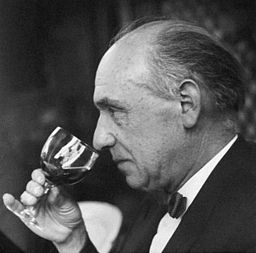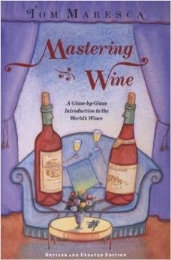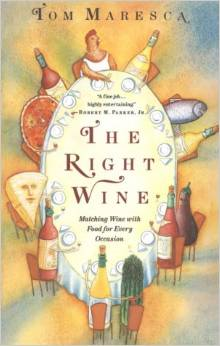To our disappointment, cruising as we were past some of the finest vineyards of southern France last month, very few of the MS Camargue’s organized excursions included winery visits or tastings. One brief but very well-organized wine tasting occurred in Tournon. This consisted of three fine samples of wines from the river’s opposite bank, Tain l’Ermitage.
The first two were excellent wines from a local co-op. It is really a wonderful testimonial to how the worldwide level of winemaking has risen that co-op wines, widely and for the most part correctly regarded as the bottom of the barrel when I started wine writing 40 years ago, can now stand as exemplars of their regional production. These two Crozes-Hermitages, a white and a red, both 2017, were exactly that.
The white, aptly named, given the omnipresent wind, Les Hautes d’Éole, had an almost-dry-honey nose and a mouth-filling medium body, with lean and nervous mature grape flavors. It was a blend of Marsanne and Roussane, classic Rhône varieties, and I found it totally enjoyable.
.
The red was 100% Syrah, as is normal – almost mandatory, in fact – in the northern Rhône. This was a classic example of the breed, spicy, peppery, black-fruited and almost meaty on the nose and palate; and, with all that, soft and full, nicely balanced, with bright acidity. It could easily take a few years of aging, though it was already a pleasure to drink..
.
The third wine was a 2016 St. Joseph from a small producer, Guy Farge, a fine wine of 100% Syrah. St. Joseph is an appellation that doesn’t get the respect it deserves. This bottle gave a pleasing aroma of spice and black pepper and stems, with similar flavors following through on the palate: classic Syrah flavors similar to the red Crozes-Hermitage, but intensified and refined. Soft and full and nicely balanced, it cried out for more cellar time: I’d give it a good five years before hoping to taste its peak.
.
.
Dinner Wines at Le Gibolin in Arles
We managed to leave our boat for one meal ashore, during an overnight mooring in Arles. This dinner at the restaurant Le Gibolin turned out to be the gustatory highlight of the cruise, probably of the trip (see Diane’s account of it). We asked the proprietress to select a different wine for us with each course, which she happily did. All were excellent local wines from small producers we would otherwise never have encountered, and we drained every glass with great pleasure.
Our pleasure was unfortunately too great, since I failed to get the relevant data for all of them. The first was a profound Cairanne from Oratoire St. Martin, a blend of Mourvèdre, Grenache, and Syrah, very balanced and deeply tasting of the south..
..
 .
.
.
The second came from the same maker, but a different vineyard and a different blend – a lot more Mourvèdre – and not entitled to the Cairenne appellation, but simply labelled Côtes du Rhône. It was called Les P’tits Gars, and it was fuller and fatter than the first wine, and played up to our main courses beautifully.
.
.
With the cheese, we were served an Ardèche Côtes du Rhône, whose name and label neither Diane nor I can recall (our bad, but the restaurant was very busy by then and madame didn’t leave the bottle for us to read) – but its bright acidity (Alicante being the dominant grape in its blend) was wonderful with the cheese.
.
Dinner Wines in Lyon: Cherry-Picking Three Restaurant Lists
Our cruise ended in Lyon, where Diane and I stayed on for three days: three dinners, as we thought of it. This was trickier than we had realized, since two of the days were Sunday and Monday, when many restaurants are closed, but we managed to find three temples of traditional Lyonnaise gastronomy while still avoiding the curse of Michelin-starred homogenization: Brasserie Georges, Le Petit Léon de Lyon, and the Paul Bocuse bistro Le Nord (Diane has written about our dinners there.)
To match with those three meals we chose a 2015 St. Joseph, a 2005 Châteauneuf du Pape, and a 2016 white Châteauneuf du Pape, and delightful choices they all were. The St. Joseph – Cuvée du Papy from Stéphane Montez – was filled with rich dark fruit both on the nose and the palate, and had a beautiful, long, blackberry finish: thoroughly enjoyable.
.
Ordering the 2005 Beaucastel Châteauneuf elicited the involuntary murmured exclamation from our up-to-that moment very polished young waiter: “Wow wow wow! Big wine!” And indeed it was: big, balanced, still quite young and fresh tasting – barely ready to drink, in fact, but deep and lovely. This was beyond enjoyable: It was pleasurable both sensually and intellectually as it kept opening in the glass.
.
Our last wine of the trip, the 2016 Vieux Télégraphe white Châteauneuf, felt in the mouth even bigger than the red wines we had had before. Almost golden in color, lovely and complex, fully dry yet with, among other things, suggestions of honey and quince, wanting years of cellaring yet already very fine – this was a great wine to end our brief foray into southern France.































